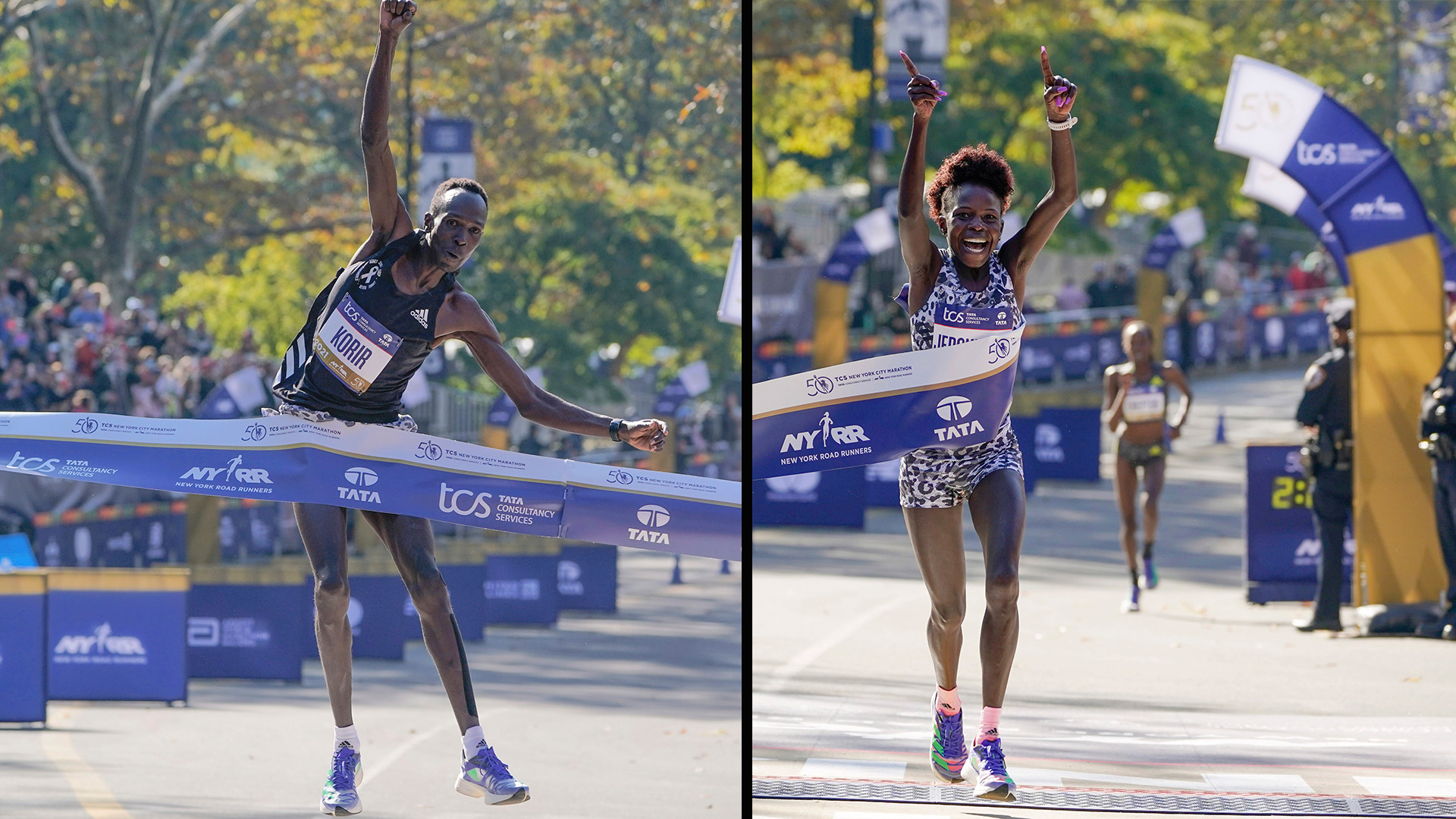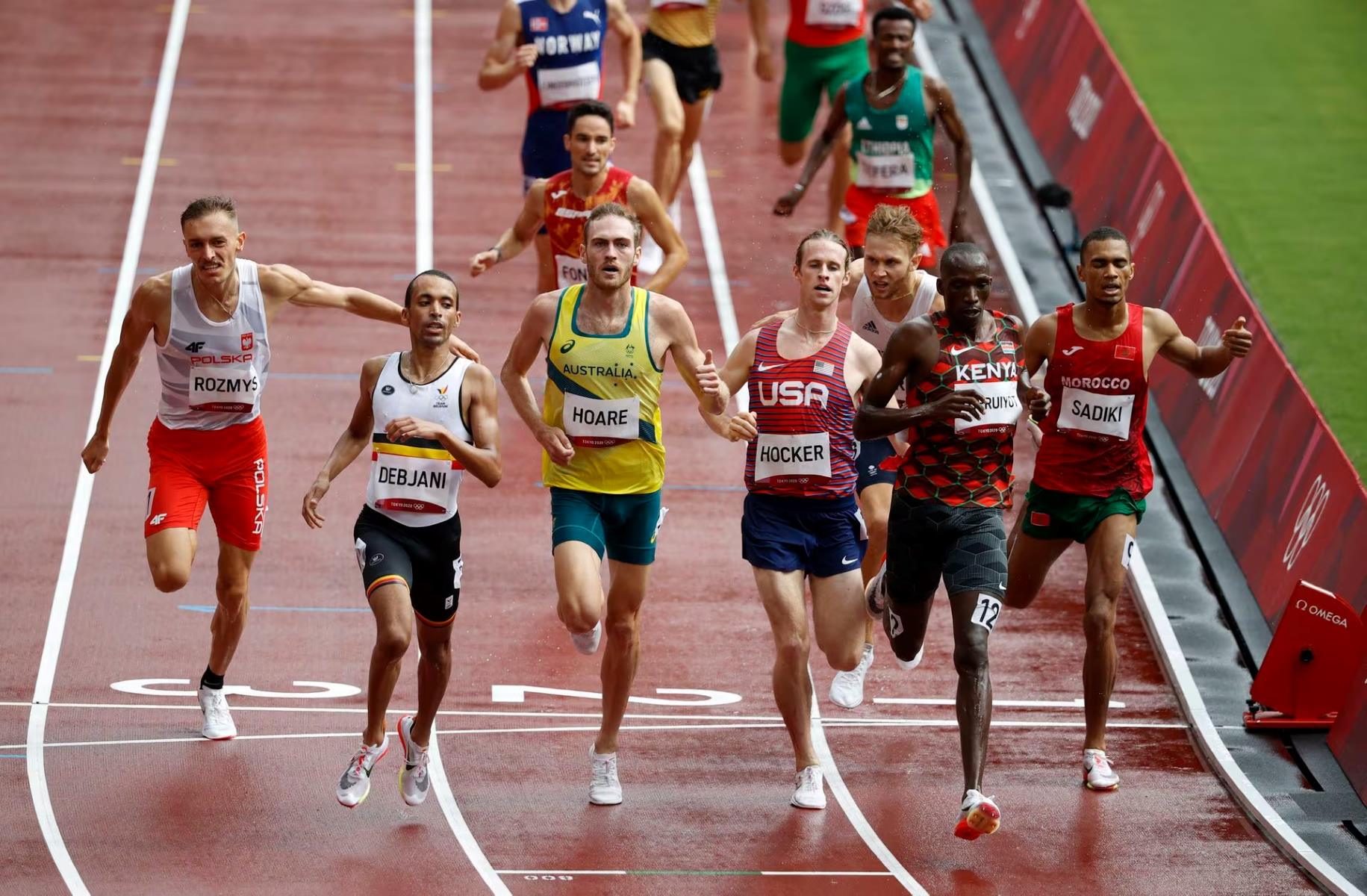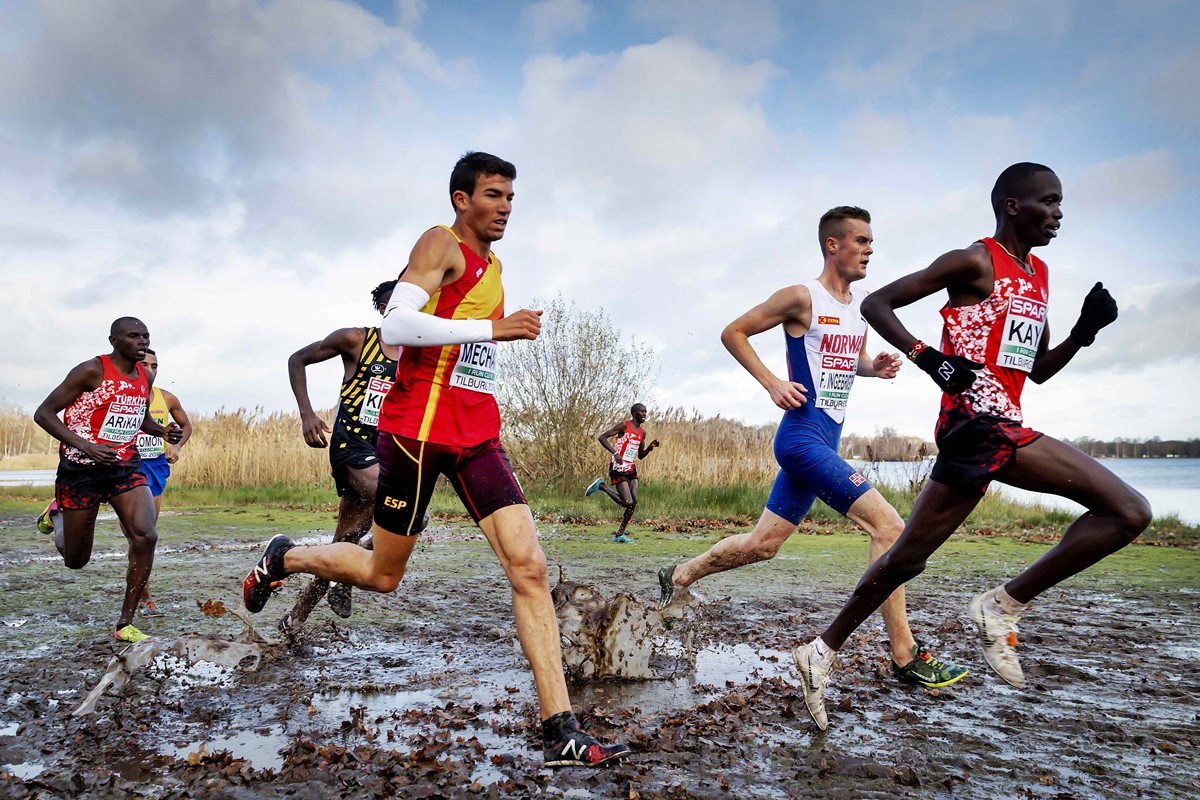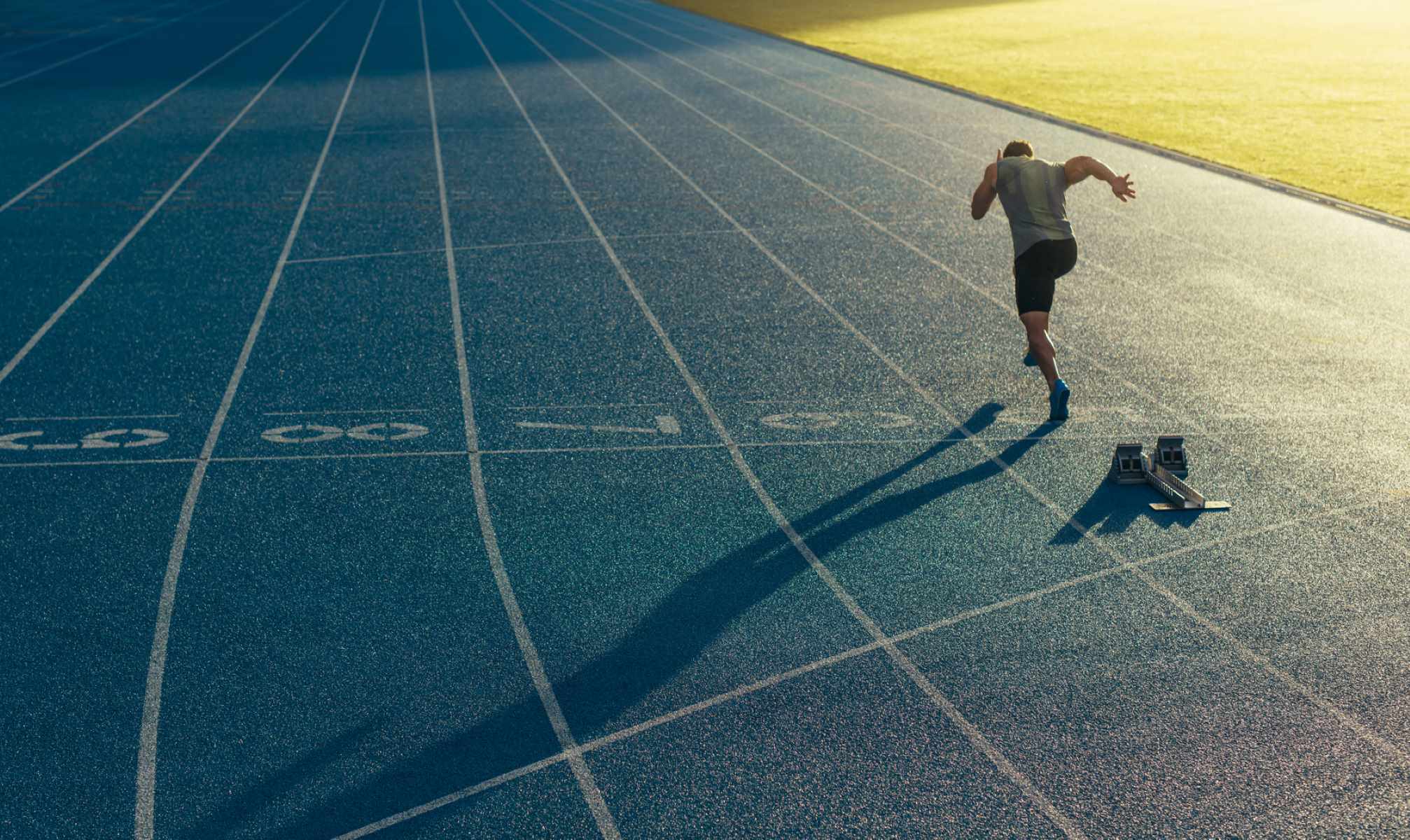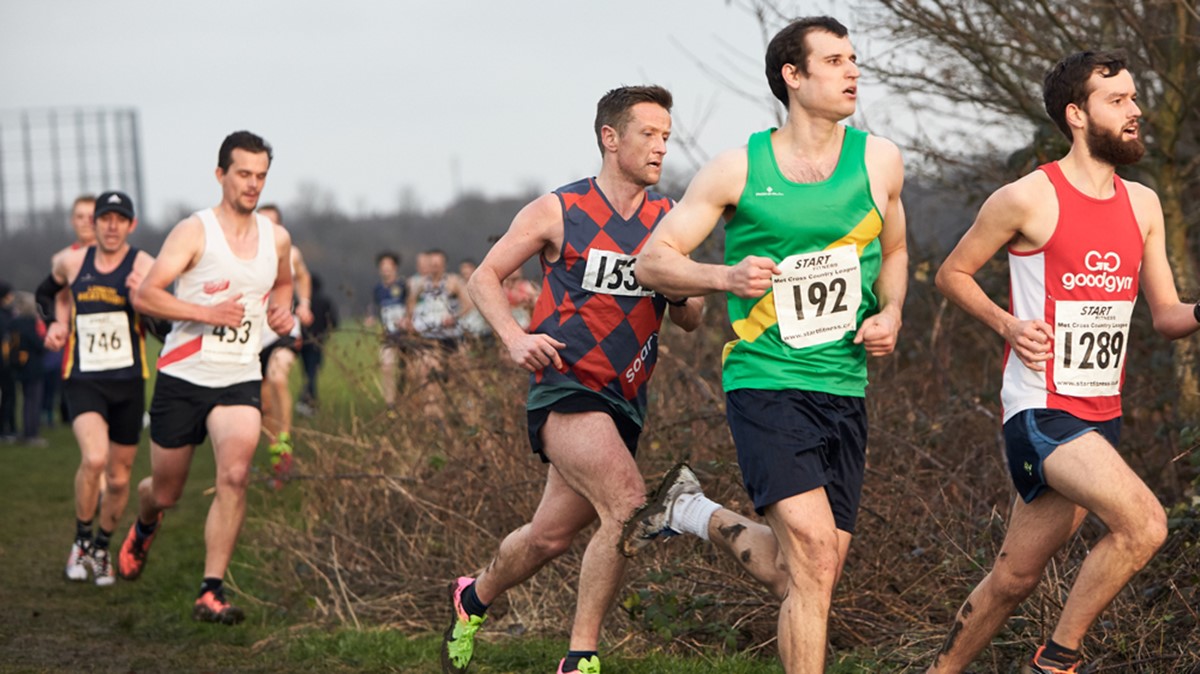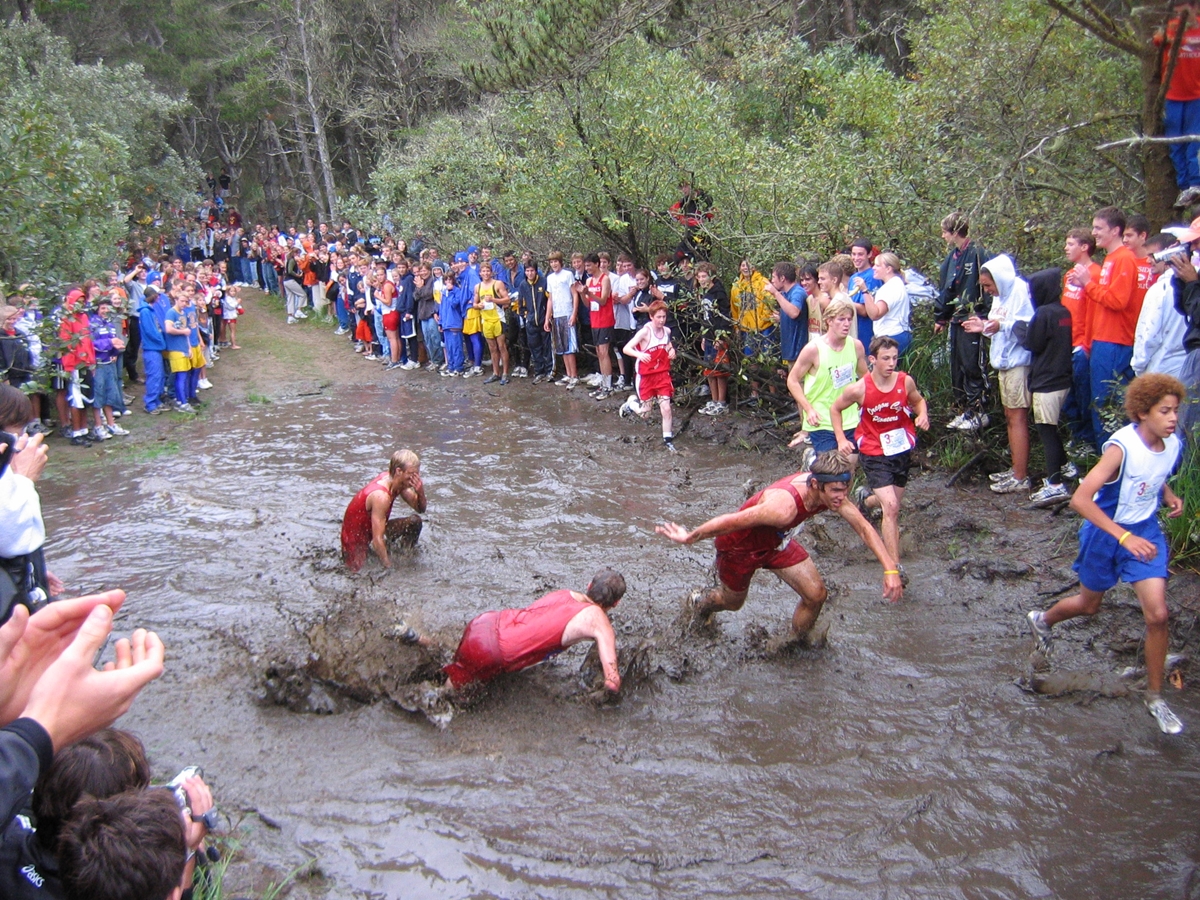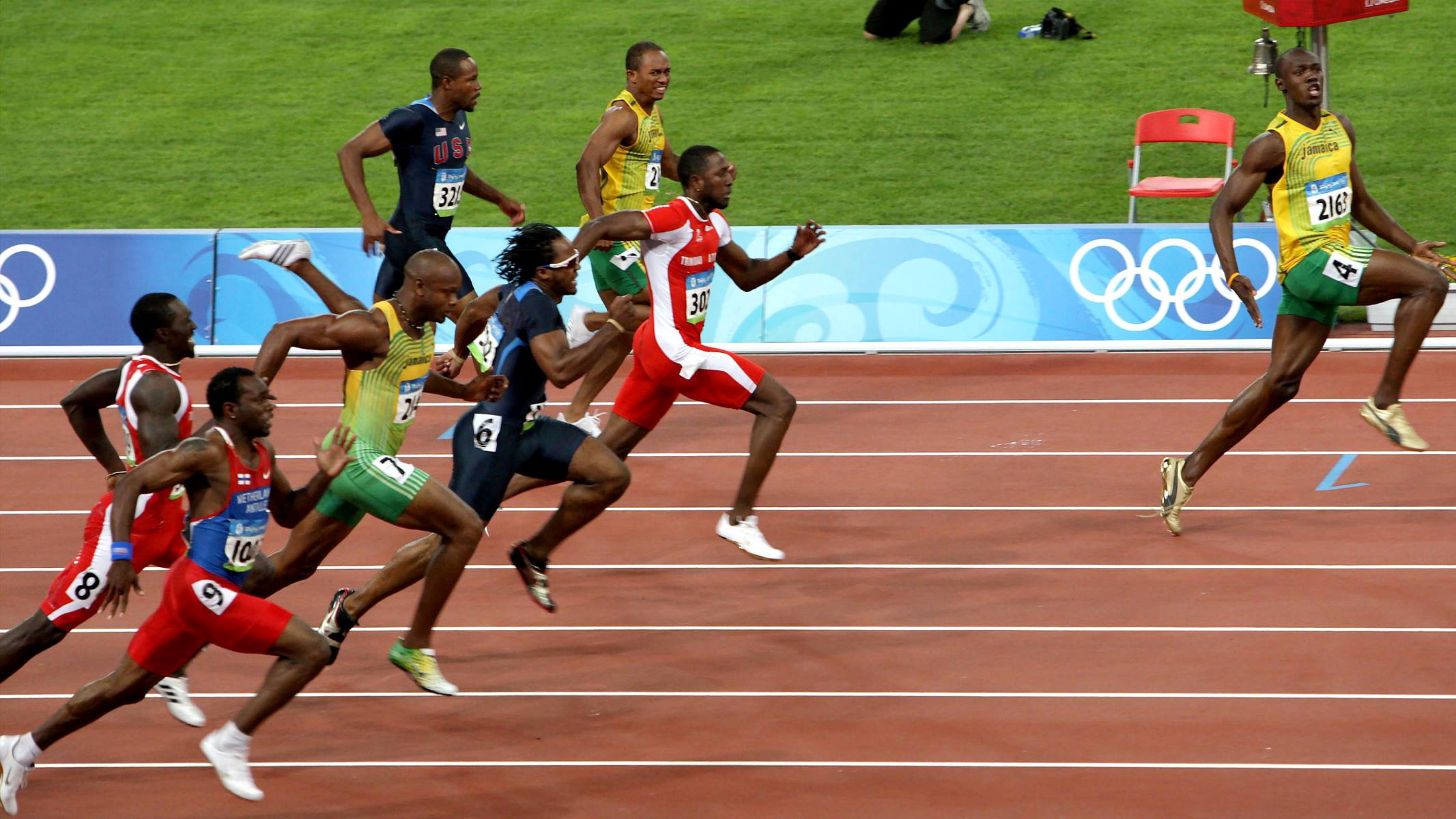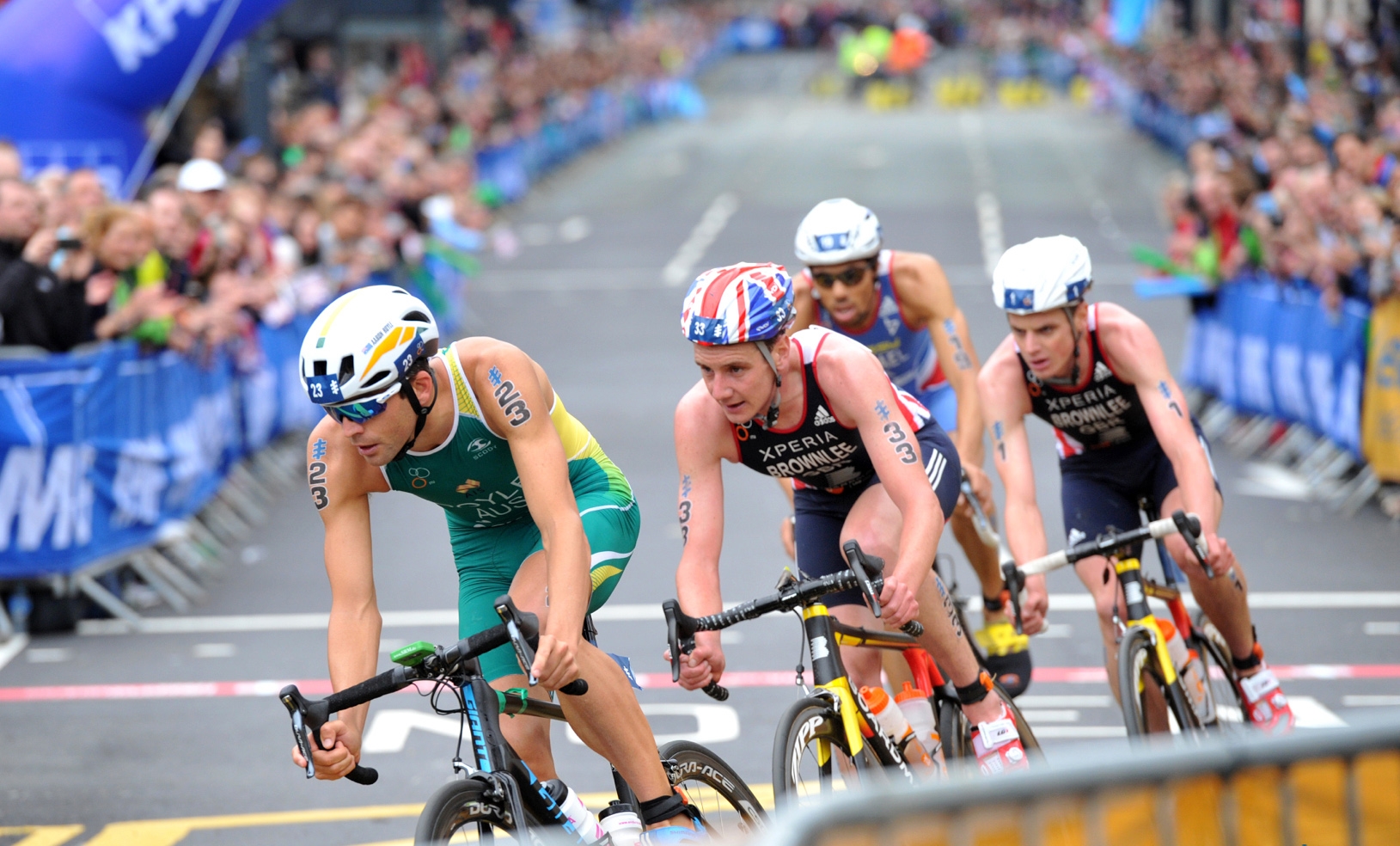Home>Misc>Featured>Olympic Track And Field: What Body Part Needs To Cross The Finish Line
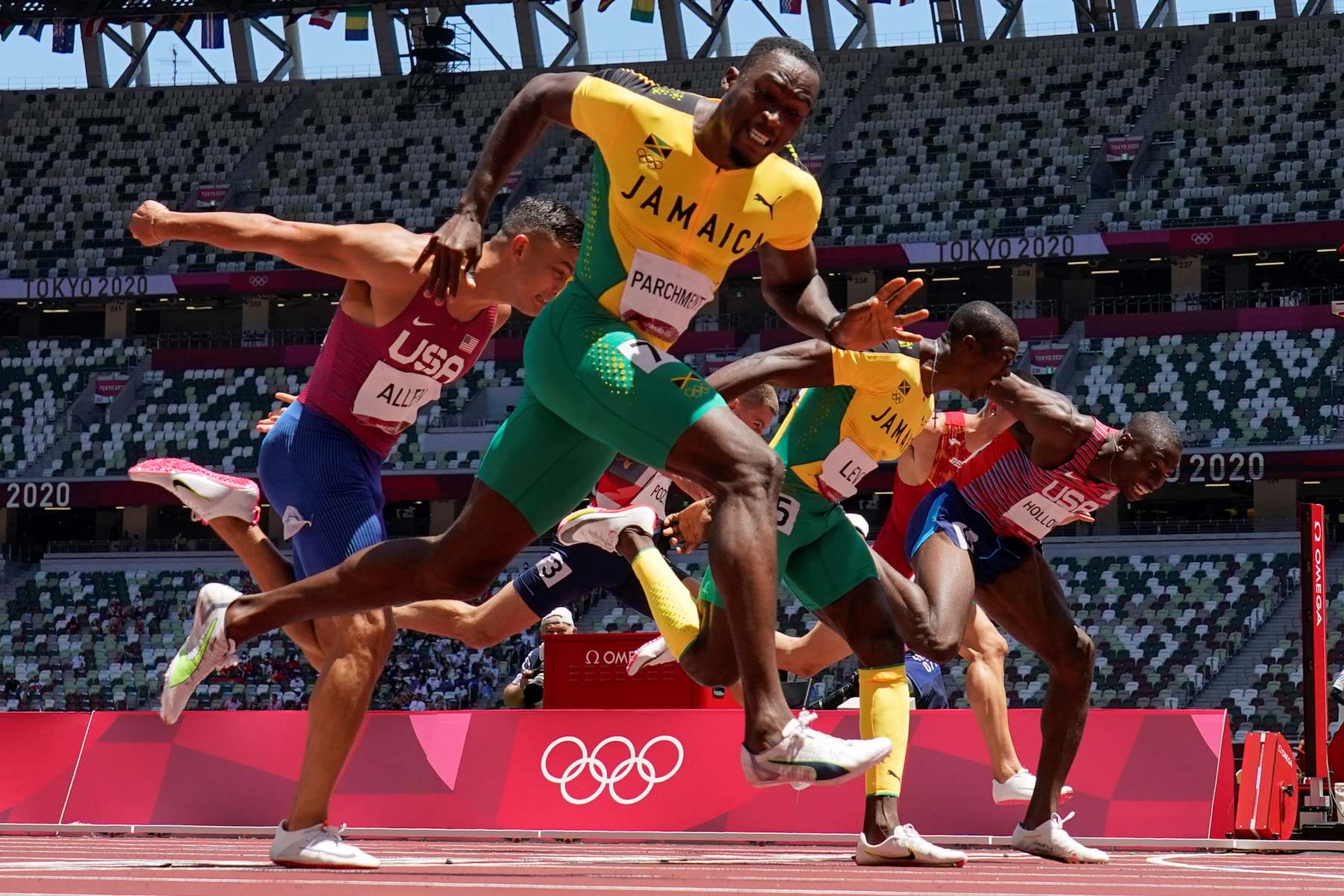

Featured
Olympic Track And Field: What Body Part Needs To Cross The Finish Line
Modified: January 2, 2024
Discover the featured article on Olympic Track and Field: Learn which body part needs to cross the finish line for a successful race. Unlock the secrets of achieving victory in this thrilling sport.
Introduction
Welcome to the exciting world of Olympic track and field, where athletes push their bodies to the limits in pursuit of victory. In this highly competitive arena, every small detail can make a significant difference in determining the outcome of a race. One crucial aspect that often goes unnoticed is the specific body part that needs to cross the finish line.
While most people assume that it is the entire body that matters, Olympic track and field events have specific rules regarding which body part must cross the finish line first. Understanding the role of different body parts in crossing the finish line is not only fascinating but also provides valuable insights into the mechanics of sprinting and the techniques used by athletes.
In this article, we will explore the significance of the body part that crosses the finish line in Olympic track and field events. We will analyze the contributions of various body parts, such as the arms, legs, torso, head, and neck, in determining the ultimate outcome of a race. By delving into the mechanics of different body parts, we can gain a deeper appreciation for the incredible athleticism and skill required to excel in these events.
So, let’s dive into the world of Olympic track and field and unravel the mysteries behind the body part that needs to cross the finish line!
Understanding the Finish Line in Olympic Track and Field
When we watch Olympic track and field events, it’s easy to focus on the athletes’ speed, form, and intensity without considering the technicalities of the finish line. The finish line is not just a random marker; it holds great importance in determining the winner of a race. In Olympic track and field, athletes are required to cross the finish line with a specific body part to declare their victory.
In most track and field events, including sprints and hurdles, the rule states that the torso, specifically the athlete’s chest, must cross the finish line for a fair and conclusive result. This means that even if an athlete’s legs or arms reach the finish line first, if their chest does not follow suit, they will not be considered the winner. This rule ensures fairness and accuracy in determining the true winner of a race.
However, it’s essential to note that there are specific exceptions to this rule in certain events. For example, in relay races, the baton exchange zone is the designated finish line for each leg of the race. In these cases, it is the entire body of the incoming runner that needs to cross the finish line within the designated exchange zone. The same applies to field events such as long jump and triple jump, where the point of landing is considered the finish line.
In Olympic track and field, race officials closely monitor the finish line using advanced timing technologies, including high-speed cameras and laser sensors. These technologies allow them to precisely determine the exact moment the body part crosses the finish line. The information collected by these devices is used to accurately rank and award the athletes based on their finishing positions.
Understanding the technicalities of the finish line in Olympic track and field serves as a reminder of the meticulous attention to detail and fairness that governs these sporting events. It highlights the emphasis on precision and accuracy in determining the true winner, ensuring that the athlete who fully meets the requirements of crossing the finish line is rightfully celebrated and rewarded.
Importance of the Body Part Crossing the Finish Line
The specific body part that crosses the finish line in Olympic track and field events plays a vital role in determining the winner of a race. The importance of this body part lies in the rules and regulations established by governing bodies to ensure fair and accurate results.
When athletes compete in track and field events, their primary goal is to cross the finish line as quickly as possible. However, simply reaching the finish line ahead of other competitors is not enough to secure a win. It is the body part that crosses the finish line first that is used to determine the final ranking and the recipient of the gold, silver, and bronze medals.
The significance of the body part crossing the finish line goes beyond just determining the winner. It also acts as a measure of an athlete’s performance and technique. Having the correct body part cross the finish line requires precision, control, and proper execution of running form. It denotes not only speed but also precision and accuracy, which are crucial components of a successful sprint or race.
Moreover, the body part crossing the finish line serves as a visual representation of an athlete’s effort and determination. It symbolizes the final push towards victory, the culmination of hours of training, and the desire to achieve greatness. Watching the body part extend and break the plane of the finish line creates a moment of intense excitement and anticipation as spectators eagerly await the official results.
Additionally, the body part that crosses the finish line can influence an athlete’s ranking and placement in the race. In events where fractions of a second can separate the top competitors, the right body part crossing the finish line can make all the difference. It can determine whether an athlete secures first place, grabs a podium spot, or narrowly misses out on the opportunity for a medal.
Overall, the significance of the body part crossing the finish line lies not only in determining the winner but also in showcasing an athlete’s athleticism, technique, and dedication. It represents the culmination of physical and mental preparation, as well as the ultimate expression of an athlete’s determination to achieve success. So the next time you watch an Olympic track and field event, pay close attention to the specific body part that crosses the finish line, as it holds the key to crowning the champion.
Analysis of Different Body Parts in Crossing the Finish Line
When it comes to crossing the finish line in Olympic track and field events, different body parts contribute to the overall success of the athlete. Each body part plays a unique role in the mechanics of running, and understanding their individual contributions can shed light on the strategies employed by athletes to achieve victory.
Arms: The arms serve as a crucial element in maintaining balance and generating forward momentum. Athletes often pump their arms vigorously, keeping them bent at a 90-degree angle while swinging them back and forth in sync with their legs. The arms assist in propelling the body forward, complementing the leg motion and maximizing speed. However, it’s important to note that while the arms may cross the finish line first in some instances, it is ultimately the torso that determines the official result.
Legs: Undoubtedly, the legs are the powerhouse of the body when it comes to running. Powerful leg muscles propel athletes forward with each stride. The extension and flexion of the legs generate the necessary force to propel the body forward and cover the distance efficiently. The coordination between the legs and the arms is vital for maintaining balance and generating optimal speed. While the legs may be the primary focus of spectators during a race, it is the body part that follows – the torso – which determines the official result.
Torso: The torso, specifically the chest, holds the key to victory in Olympic track and field events. It must be the body part that crosses the finish line for an athlete to be declared the official winner. The forward leaning position of the torso during sprinting helps optimize stride length and running technique. A strong and stable core is essential for maintaining proper form and maximizing speed. The ability to maintain control and keep the torso aligned with the direction of the race is crucial for a successful finish.
Head and Neck: While the head and neck may not be the primary factors in determining the official result, they play a vital role in maintaining proper running posture and focus. Keeping the head steady, aligned with the spine and looking straight ahead, helps athletes maintain balance and ensures efficient body mechanics. The neck acts as a connector between the torso and the head, enabling smooth movement and facilitating a streamlined running position.
Understanding the analysis of different body parts involved in crossing the finish line provides valuable insights into the complex biomechanics of running in Olympic track and field events. Achieving the perfect coordination and synchronization of these body parts is what allows elite athletes to achieve remarkable speed, precision, and ultimately, victory.
The Role of Arms in Crossing the Finish Line
When it comes to crossing the finish line in Olympic track and field events, the role of the arms is crucial. While it is ultimately the torso that determines the official result, the arms play a significant part in achieving success. Let’s take a closer look at why the arms are essential and how they contribute to an athlete’s performance.
The arms serve as vital components in maintaining balance and generating forward momentum. When sprinting or racing, athletes use their arms to pump vigorously, creating a powerful driving force that complements the motion of their legs. The arms swing back and forth in sync with the legs, helping to generate speed and propel the body forward.
By keeping the arms bent at a 90-degree angle and swinging them in a coordinated manner, athletes maximize the efficiency of their strides. This synchronization between the arms and the legs ensures a smooth and fluid running technique, allowing for optimal energy transfer and reduced wasted motion.
Besides contributing to forward propulsion, the arms also assist in maintaining balance and stability during high-speed running. As the legs drive the body forward, the arms counterbalance the motion, preventing any rotational or lateral movements that may hinder performance.
Proper arm positioning and movement also help athletes maintain a forward-leaning posture, which is crucial for maximizing stride length. By leaning slightly forward from the hips and aligning the upper body with the direction of the race, athletes are able to create longer strides and cover more ground with each step.
Furthermore, the arms play a psychological role in crossing the finish line. As athletes approach the final stretch, they often pump their arms more vigorously, using them as a visual cue to push harder and give their all in the final moments of the race. The psychological boost provided by the arm movement can help athletes tap into their reserves of strength and endurance, giving them the extra push needed to propel themselves across the finish line.
While it is the torso that ultimately determines the official result in Olympic track and field events, the role of the arms in crossing the finish line should not be underestimated. They contribute to forward propulsion, balance, stability, and psychological motivation. The synchronized movement of the arms with the legs is a crucial aspect of achieving optimal running form and maximizing speed. So, the next time you watch a sprint or race, pay close attention to the athletic prowess displayed by the arms as they aid the athletes in their quest to cross the finish line with determination and success.
Influence of Legs on Crossing the Finish Line
When it comes to crossing the finish line in Olympic track and field events, the legs play a pivotal role in an athlete’s performance. They are the powerhouse of running, generating the necessary force to propel the body forward and achieve optimal speed. Let’s delve into the influence of the legs on crossing the finish line and explore how they contribute to an athlete’s success.
The legs are responsible for executing the biomechanics of running and driving the body forward. The extension and flexion of the legs create the push-off and propulsive forces required for forward propulsion. As athletes push off the ground with each stride, the powerful leg muscles generate the necessary force to propel them towards the finish line.
Efficient leg movement is essential for speed and acceleration. Athletes strive to achieve a balanced and controlled leg stride, maximizing their stride length while minimizing wasted energy. Proper technique and alignment of the legs enable athletes to cover more ground with each step, ultimately reaching the finish line faster.
In addition to generating power, the legs also contribute to maintaining balance and stability during high-speed running. The coordinated movement of the legs helps to counterbalance the motions of the upper body, ensuring the body remains aligned and stable. This balance is vital to prevent any rotational or lateral movements that may hinder an athlete’s performance.
Moreover, the legs play a crucial role in determining the overall speed and sprinting technique of an athlete. They assist in maintaining an optimal cadence and rhythm throughout the race, ensuring a smooth and efficient running motion. The coordinated movement of the legs, combined with precise foot placement and ground contact, allows athletes to maintain momentum and reduce any unnecessary decelerations.
It’s important to note that while the legs are the primary focus of spectators during a race, it is ultimately the body part that follows – the torso – that determines the official result. However, the influence of the legs on crossing the finish line cannot be overlooked. They are the driving force behind an athlete’s speed, power, and efficient running technique.
Next time you watch an Olympic track and field event, pay close attention to the incredible leg power and precision displayed by the athletes as they strive to cross the finish line. The synchronized and coordinated movement of their legs is what allows them to showcase their athletic prowess and achieve remarkable feats on the track.
Significance of the Torso in Crossing the Finish Line
In Olympic track and field events, the specific body part that crosses the finish line and ultimately determines the official result is the torso, specifically the chest. The significance of the torso in crossing the finish line cannot be overstated, as it plays a vital role in an athlete’s performance and the determination of the winner. Let’s explore the importance of the torso and how it contributes to a successful finish.
The torso serves as the core of an athlete’s body, providing stability, control, and balance during high-speed running. It is the central point from which energy is transferred to the limbs, allowing for efficient movement and power generation. The ability to maintain a strong and stable core is essential for athletes to execute proper running form and maximize speed.
During sprinting and racing, the forward-leaning position of the torso is crucial for optimal stride length and running technique. The slight forward lean helps athletes achieve a more efficient distribution of weight and facilitates the generation of maximum force with each stride. It allows for a longer driving phase and reduced braking forces, thus improving overall speed and efficiency.
Furthermore, the alignment of the torso with the direction of the race is essential for maintaining proper body mechanics and minimizing any lateral or rotational movements. A stable and aligned torso ensures that the body stays on track and moves in a straight line towards the finish line. This alignment aids in reducing any unnecessary energy loss and optimizing the athlete’s performance.
Additionally, the chest is the specific part of the torso that needs to cross the finish line to determine the official result. This rule ensures fairness and accuracy in determining the winner of the race. While the arms or legs may cross the finish line first in some instances, it is ultimately the chest crossing the line that is used as the basis for ranking and awarding the athletes.
The torso also plays a psychological role in crossing the finish line. As athletes approach the final stretch, keeping their torso focused and driving forward becomes crucial. Mentally maintaining a strong and engaged torso position can help athletes tap into their reserves of strength and endurance, allowing them to push through fatigue and give their all in the last moments of the race.
Understanding the significance of the torso in crossing the finish line highlights the importance of core strength, balance, and body positioning in Olympic track and field events. It underscores the need for athletes to train not only their legs and arms but also their core muscles to ensure stability, control, and efficient energy transfer during races.
Next time you watch a sprint or race, pay close attention to how athletes maintain their torso position as they strive to cross the finish line. The determination and power displayed by the torso are key factors in an athlete’s success, making the difference between victors and contenders on the track.
Contribution of the Head and Neck in Crossing the Finish Line
While the focus in Olympic track and field events is often on the legs, arms, and torso, the contribution of the head and neck should not be overlooked. The head and neck play crucial roles in maintaining proper running posture, balance, and focus, which can ultimately impact an athlete’s ability to cross the finish line successfully. Let’s delve into the significance of the head and neck in crossing the finish line.
The head serves as a key element in maintaining a stable and aligned running position. Keeping the head steady and aligned with the spine is essential for optimal running form. By looking straight ahead, athletes are able to maintain balance and ensure efficient body mechanics during high-speed running. The head acts as a visual guide, helping athletes stay on track and maintain a straight path towards the finish line.
Along with the head, the neck plays a crucial role in facilitating smooth and coordinated movement between the upper body and the head. A flexible neck enables athletes to maintain a natural running posture and facilitates efficient rotation of the head as needed. The neck acts as a connector between the torso and the head, allowing for smooth movement and a streamlined running position.
In addition to maintaining proper posture, the head and neck contribute to an athlete’s focus and mental fortitude. Keeping the head up and focused helps athletes stay engaged and alert during a race. By directing their gaze towards the finish line, athletes can mentally prepare themselves for the final stretch and push through any fatigue or challenges they may encounter.
The head and neck also play a role in maintaining balance and stability. As the rest of the body moves dynamically during running, the head and neck work in tandem to counterbalance these movements, allowing for smooth and controlled running motion. This balance is essential to prevent any excessive rotational or lateral movements that may hinder an athlete’s performance.
Furthermore, the head and neck provide a visual cue for spectators, portraying an athlete’s determination and effort. As athletes approach the finish line, spectators can see the strain and intensity reflected in their facial expressions and the position of their head and neck. This display of dedication and focus can further motivate athletes to give their all and push themselves to cross the finish line with determination.
While the head and neck may not be the primary factors in determining the official result, their contributions to maintaining proper posture, balance, focus, and mental fortitude should not be underestimated. The synchronized movement of the head and neck with the rest of the body allows athletes to maintain optimal running form and maximize their performance as they strive to reach the finish line.
Next time you watch an Olympic track and field event, pay attention to the movement and positioning of the head and neck as athletes approach the finish line. Their role in power, focus, and maintaining balance is a testament to the comprehensive and intricate nature of running and underscores the importance of a coordinated body to achieve success on the track.
Conclusion
The world of Olympic track and field is a testament to the remarkable athleticism, skill, and dedication of the athletes who compete at the highest level. In this article, we have explored the fascinating concept of the body part that needs to cross the finish line and its implications in determining the winner of a race.
We began by understanding the rules and technicalities of the finish line in Olympic track and field events, where it is the torso that ultimately determines the official result. We then delved into the analysis of different body parts, such as the arms, legs, torso, head, and neck, to better grasp their unique contributions and significance in crossing the finish line.
The arms, with their powerful pumping motion, aid in generating forward momentum and maintaining balance. The legs, as the driving force of running, generate power and stride efficiency. The torso, specifically the chest, serves as the ultimate determinant of victory. The head and neck contribute to maintaining posture, focus, and balance throughout the race.
Each body part plays a vital role, showcasing the intricate biomechanics of running and the expertise required to achieve optimal performance. The synchronized movement and coordination of these body parts allow athletes to maximize their speed, maintain stability, and propel themselves towards the finish line with determination and precision.
Through our exploration, we have gained a deeper appreciation for the physical and mental components involved in crossing the finish line in Olympic track and field events. The body part that crosses the finish line serves as a visual representation of an athlete’s effort, dedication, and quest for victory.
So, the next time you watch an Olympic track and field event, pay attention to the intricate dance of the body as it strives to achieve the ultimate goal of crossing the finish line. Celebrate the power of the arms, legs, torso, and the focus of the head and neck as they work harmoniously to propel athletes towards their dreams of glory.
